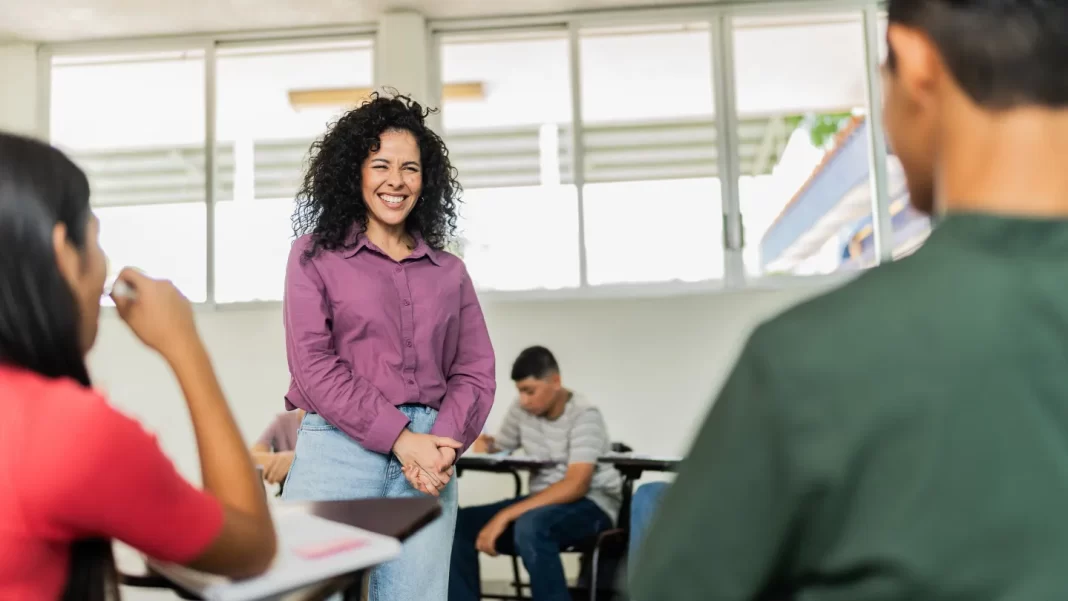As a high school English teacher, I see it all the time: A student stares at their paper, pencil hovering above the page. “I don’t know what to write,” they say. When I ask, “What do you want to communicate?” they shrug. But when I shift the question to “What’s one thing you’d like someone to understand about your perspective?” suddenly the ideas start flowing.
Our brains are always answering questions—so the ones we ask matter.
The Science Behind Better Questions
Cognitive research confirms that questions shape our thinking. This is known as the question-behavior effect, which suggests that once a question is posed, our brain begins working—often unconsciously—to resolve it. If we ask limiting questions like Why am I bad at this? our brain will search for evidence to confirm that belief. But when we ask possibility-driven questions, such as How can I improve?, we spark a completely different mental trajectory.
David Cooperrider, a leader in Appreciative Inquiry, explains: “People and organizations move in the direction of the questions they ask.” In classrooms, this means the way we frame questions can either open doors for students or reinforce barriers.
3 Strategies to Ask Better Questions in the Classroom
1. Shift from problem-focused to possibility-focused questions. Traditional school environments often encourage problem-solving questions: What went wrong? What mistakes did you make? While reflection is valuable, these questions can trap students in a deficit mindset. Instead, we can encourage resilience and motivation by shifting our questions to focus on strengths and potential.
Try these reframes:
- Instead of Why didn’t you finish the assignment? ask, What helped you complete the parts you did finish?
- Instead of What’s the problem with this argument? ask, What’s a strength in this argument that you could build on?
Tip for question formation: Identify the problem-based question, shift the focus to strengths or opportunities, and ask in a way that encourages forward movement.
2. Make questions more precise to get clearer answers. Vague questions lead to vague responses. I once asked my students, Can you explain this passage? and received blank stares. But when I asked, How does the author’s use of imagery create an emotional response? hands shot up.
In my 11th-grade English class, students were struggling with identifying themes in The Great Gatsby. Instead of What is the theme of this chapter? I asked, How does Gatsby’s pursuit of Daisy illustrate the novel’s message about the American Dream? The specificity helped students engage with the material more deeply.
Tip for question formation: Eliminate vagueness, specify the desired response, and frame the question in a way that leads to actionable insight.
In the classroom, precise questions do the following:
- Reduce misunderstandings
- Encourage critical thinking
- Make learning objectives clearer
Try these tweaks:
- Instead of Can you help with class clean-up? ask, Can you wipe down the desks while I put away the books?
- Instead of Did you understand the reading? ask, What’s one idea from the reading that challenged your thinking?
3. Use reflective questions to encourage deeper thinking. Some of the best classroom discussions start with open-ended, reflective questions. Instead of leading students to one “right” answer, these questions invite them to think critically, connect ideas, and generate insights.
I introduced a weekly Reflection Friday activity, where students responded to open-ended prompts. One week, instead of What did you learn from the reading? I asked, What’s one idea from the reading that made you see the world differently? The responses were deeper, were more personal, and sparked meaningful discussions.
Try these:
- Instead of Did you like the book? ask, What part of the book resonated with you the most?
- Instead of What grade do you want on this paper? ask, What skills do you want to improve with this assignment?
Tip for question formation: Start with an open-ended phrase, link it to a personal or broader connection, and steer clear of yes/no responses.
The Power of Questions in Learning
Great questions don’t just lead to better answers; they create new pathways for learning, deeper engagement, and more meaningful connections between students and their work. When we reframe our questions to focus on possibilities rather than deficits, when we make them clear and purposeful, and when we encourage reflection, we empower students to take ownership of their learning and discover their full potential.
I’ve witnessed the transformative power of intentional questioning in my own classroom—students who once doubted their abilities begin to recognize their strengths, and those who hesitated to participate start engaging with confidence. Questions are more than just tools for assessment—they are invitations to think, to explore, and to grow. The right question at the right moment can turn confusion into clarity and hesitation into curiosity.
Work and Improve Questioning
Want to put this into action? Try this: Pick a lesson this week and pay close attention to the questions you ask. Are they precise? Do they invite possibility? Do they encourage reflection? Rewrite one question using the strategies above and observe how students respond.
Do their answers become more thoughtful, specific, or engaged? If so, you’re on the right track.
Start keeping a “Question Journal.” Jot down the most impactful questions you ask each week. Over time, you’ll refine not just the way you communicate but also how your students think, engage, and learn.
Because when we—like our students—commit to asking better questions, we create a learning environment where curiosity flourishes, insights deepen, and possibilities expand.



